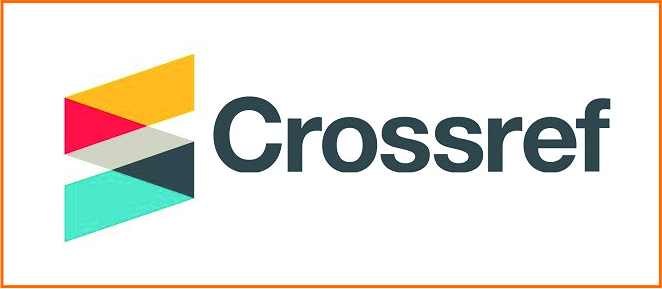The Impact of Spatial Layout on Commercial Property Value
Abstract
Tangerang regency has an extensive administrative area, which makes some residential areas are closer to the government center of another city, such as Tangerang city. One example is Villa Tomang Baru residential area. Despite its strategic location and supporting facilities, it has a commercial area called Tomang Baru Square that lacks visitors and tenants. Therefore, the purpose of the paper is to analyse the impact of commercial space layout on property value in Tomang Baru Square. The analysis was carried out with a qualitative method by collecting observation data and doing literature studies. From the literature study, the author found several research parameters for the spatial layout variable and the property value variable. Literature findings show that property value can be analyzed through four aspects: utility, scarcity, effective demand, and transferability. Meanwhile, spatial layout is assessed based on the presence of anchors, supporting activities, integration and accessibility, building visuals, and comfort and security. Based on the analysis result, it was found that the utility, effective demand, and transferability aspects were still not being fulfilled and therefore the property value has decreased.
Keywords
Full Text:
PDFReferences
BPS Kabupaten Tangerang, “Kabupaten Tangerang dalam Angka,” Tangerang, 2023.
A. I. Fauzi, “Ribuan Warga Terdampak Banjir di Kabupaten Tangerang, Tinggi Mencapai 1,6 Meter,” TangerangNews.com.
C. Murti and H. B. Wijaya, “Pengaruh Kegiatan Komersial terhadap Fungsi Bangunan Bersejarah di Koridor Jalan Malioboro Yogyakarta,” Teknik PWK, vol. 2, no. 1, pp. 60–75, 2013.
J. A. Casazza and F. H. Spink, Shopping Center Development Handbook, 2nd ed. Washington DC: Urban Land Institute.
P. H. Bloch, N. M. Ridgway, and J. E. Nelson, “Leisure and the Shopping Mall,” Advances in Consumer Research, pp. 445–452, 1991.
P. Coleman, Shopping Environments: Evolution, Planning, and Design, 1st ed. Denver: Routledge, 2006.
A. Meikanugrah, “Redesain Matahari Benteng Plaza di Surakarta,” Universitas Islam Indonesia, pp. 7–38, 2000.
A. Khairunnisa, “Pusat Perbelanjaan di Kabupaten Jember,” Insitut Teknologi Nasional, Malang, 2023.
Fransisca, “Pusat Perbelanjaan Modern di Yogyakarta Studi Tata Ruang Luar dengan Konsep Citywalk,” Journal Uajy, vol. 1, no. 1, pp. 1–22, 2014.
A. Syoufa and H. Hapsari, “Pengaruh Pola Sirkulasi Pusat Perbelanjaan Mall terhadap Pola Penyebaran Pengunjung,” Jurnal Desain Konstruksi, vol. 13, no. 2, pp. 46–57, 2014.
F. Dikwatama, F. Srinaga, and A. Mensana, “Peningkatan Interaksi Publik melalui Penerapan Threshold Space pada Area Komersial di Kawasan Mangga Besar, Jakarta,” SMART: Seminar on Architecture Research and Technology, vol. 4, no. 1, pp. 67–88, 2019.
J. D. Shilling, Real Estate, 13th ed. Ohio: Souther-West Thomson Learning University of Wisconsin, 2002.
Y. Sitanggang and D. Susanto, “The impact of green building approach to office property value,” IOP Conf Ser Earth Environ Sci, vol. 99, p. 012020, Dec. 2017, doi: 10.1088/1755-1315/99/1/012020.
A. et. al. Arnold, Modern Real Estate. Boston: Warren, Gorham & Lamont, Inc., 1980.
D. Harvey, Social Justice and The City. Baltimore: John Hopkins University Press, 1973.
I. G. A. K. R. Saputra, “Estimasi Nilai Wajar SPBU dengan Pendekatan Biaya (Studi Kasus: SPBU Kecamatan Marga, Kabupaten Tabanan),” Politeknik Keuangan Negara STAN, Jakarta, 2022.
B. Sujono, “Penilaian Asset dalam Sektor Properti,” Jurnal Arsitektur FT UNDIP MODUL, vol. 11, no. 1, pp. 37–40, 2011.
J. W. Creswell and J. D. Creswell, Research Design: Qualitative, Quantitative, and Mixed Methods Approaches, 5th ed. USA: SAGE Publication, Inc., 2018.
Sugiyono, Metode Penelitian Kuantitatif, Kualitatif dan R&D. Bandung: Alfabeta, 2018.
R. I. Northen and M. Haskoll, Shopping Centre a Developer’s Guide to Planning and Design, 1st ed. New York: College of Estate Management, 1977.
DOI: http://dx.doi.org/10.36448/ja.v15i2.4008

This work is licensed under a Creative Commons Attribution-NonCommercial-NoDerivatives 4.0 International License.
JURNAL ARSITEKTUR saat ini terindeks:











This work is licensed under a Creative Commons Attribution-NonCommercial 4.0 International License




